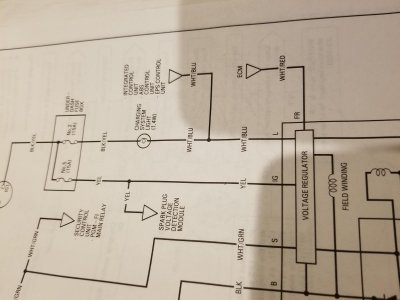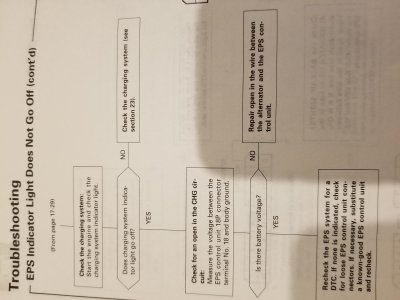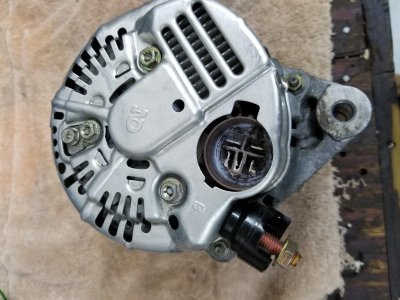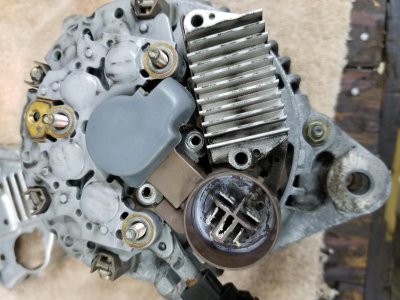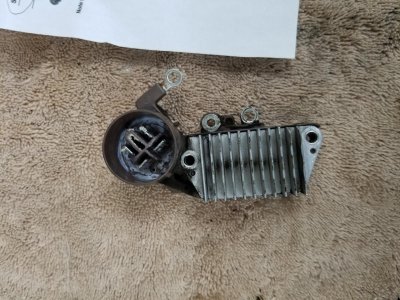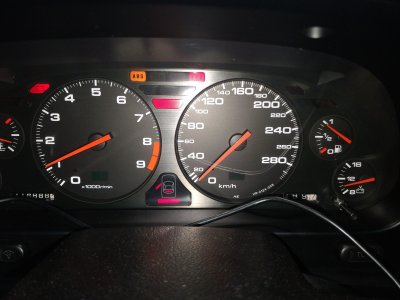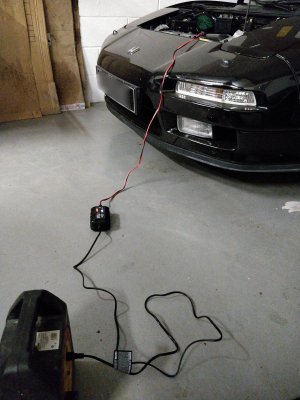Do you think the low voltage could have caused the EPS and ABS lights?
My plan is to replace the rectifier and voltage regulator in the alternator along with a new battery. Then see if the charge light goes out. I dont have a Sun VAt tester to figure out exactly what is wrong with the charging system. But, everything is pointing to the alternator. Maybe the tender kept the battery charged but once it went under load the alternator really had to charge and decided to quit. Or it is punishing me for letting it sit for 4-5 months! I expect this from my other cars not the Acura.
I went out to my car and checked and the charge light symbol is a battery, so I guess its fair game to call it a battery light:smile:.
Low voltage will definitely cause problems for the EPS. I am not sure about the ABS. However, see my comment towards the end on common alternator / ABS / EPS problems.
My initial gut reaction was just replace the alternator; but, on checking I see rebuilds seem to be in short supply and complete new alternators are mind buggeringly expensive, which makes repair a more attractive option.
First thing, make sure fuse
#2 and
#18 are OK. Normally I would then look at the brushes on the alternator as the most likely failure item; but, at 23000 miles that would seem like premature failure. The rectifier assembly and regulator are available as parts; but, those two items are going to set you back close to $500 so I would not be inclined to test by replacement. Rectifiers tend to be dumb ass reliable (I have a 1971 Volvo with the original rectifier assembly in the alternator). Honda provides a test procedure for the rectifier which is fairly easy to do once apart so test before deciding to replace. Also, unless there is a broken main wire in the rectifier assembly a single diode failure does not completely disable the alternator. There is no bench test for the regulator assembly. There is a performance type test for the regulator; but, the alternator has to be doing something in order to carry out that test which does not appear to be an option for you. With the engine running you can do the manual full field test (as described in the SM) and if the alternator starts producing voltage (lots with application of full field) then it likely is a problem with the regulator circuit. It seems that if you rule everything else out the regulator is the default failure.
However, if the full field test points a finger at the regulator, before replacing the regulator carefully check all the wiring between the regulator assembly and the rest of the car. There are problems with the charge indicator circuit that can cause problems for both the EPS and the ABS system (Hmmm - sound familiar?). The test procedure for the charge indicator circuit in the service manual mentions the related problems with the EPS and ABS so it would be good to check that out first.
Good luck with it. A couple of years back I was PM ing back and forth with another Prime member who had a weird problem where the voltage would randomly take a big nose dive every so often while driving. It was so bad that it would cause engine problems. He had to buy and connect a data logger to record the voltages at various points in the car while driving. Took for ever; but, eventually it was tracked down to the alternator wiring banging against something causing insulation damage eventually leading to temporary shorts. The reason for the banging turned out to be a failed front engine mount. Front engine mount failure = electrical problems, didn't see that one coming!







